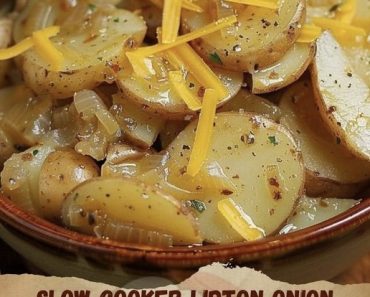
Pineapple Chicken and Rice
When life gets busy, we all crave a meal that’s quick, easy, and absolutely delicious. Enter Pineapple Chicken and Rice—a savory and sweet dish that brings comfort to the table in under 30 minutes! This recipe combines tender chunks of chicken, vibrant bell peppers, and the tropical flavor of pineapple for a perfect harmony of flavors. Whether it’s for a weeknight dinner or a special family gathering, this dish is sure to win hearts. Plus, it’s budget-friendly and uses ingredients you likely already have in your pantry!
This dish has a wonderful balance of sweet and savory, with the tangy pineapple adding a burst of freshness to the savory chicken. It’s a true crowd-pleaser that even picky eaters will love. The soy sauce-based sauce has just the right amount of sweetness from brown sugar, and it coats everything in a delightful glaze. It’s comfort food with a tropical twist!
Ingredient Overview
To make this recipe come to life, you’ll need a handful of simple, everyday ingredients. Here’s a breakdown of what makes each element special:
- Chicken Breast: Lean, tender chicken chunks are the base of this dish. Chicken breast cooks quickly and soaks up the flavors of the sauce beautifully.
- Pineapple Chunks: Whether fresh or canned, pineapple adds a tangy sweetness that balances the savory elements. It’s like a tropical vacation on your plate!
- Bell Pepper: A bright pop of color and a slightly sweet crunch. I recommend using a red or yellow bell pepper for a sweeter flavor.
- Onion & Garlic: These aromatics form the foundation of the dish, providing a rich base of flavor that pairs perfectly with the sauce.
- Cooked Rice: Fluffy white rice serves as the perfect base, soaking up the rich sauce and holding everything together.
- Soy Sauce & Brown Sugar: The base of the sauce, soy sauce brings umami, while brown sugar adds sweetness. Together, they form a balanced glaze.
- Cornstarch & Water: This simple slurry thickens the sauce, making it glossy and perfectly clinging to the chicken and vegetables.
- Green Onions: A fresh garnish that adds a mild onion flavor and a beautiful pop of color.
Step-by-Step Cooking Instructions
Step 1: Prepare the Chicken
Heat a large skillet over medium heat and add a drizzle of oil. Cook the chicken chunks, turning them until they’re browned on all sides and cooked through. This takes about 6-8 minutes. Pro Tip: Don’t crowd the pan! If needed, cook the chicken in batches to ensure even browning.
Step 2: Add Aromatics and Vegetables
Once the chicken is cooked, add the diced bell pepper, onion, and minced garlic to the skillet. Cook for about 3-4 minutes, or until the vegetables are softened and the onions are translucent. Helpful Tip: Stir frequently to prevent the garlic from burning and becoming bitter.
Step 3: Make the Sauce
In a small bowl, whisk together the soy sauce, brown sugar, cornstarch, and water until smooth. Pour the sauce over the chicken and vegetable mixture in the skillet, stirring to coat everything evenly.
Step 4: Add Pineapple and Thicken the Sauce
Add the pineapple chunks to the skillet and stir to combine. Let the mixture simmer for about 5 minutes, allowing the sauce to thicken. The pineapple will release its juices, adding a beautiful sweetness to the dish.
Step 5: Serve Over Rice
Spoon the pineapple chicken over a bed of fluffy cooked rice. Garnish with green onions for a burst of fresh flavor and color. Serve hot and enjoy!
20 Frequently Asked Questions (FAQ)
1. Can I use chicken thighs instead of chicken breast?
Yes! Chicken thighs will add a richer flavor and more moisture to the dish.
2. Can I make this dish vegetarian?
Absolutely. Substitute the chicken with tofu or tempeh for a plant-based version.
3. What type of rice works best?
Jasmine or basmati rice works great, but you can also use brown rice for a healthier option.
4. Can I use frozen bell peppers?
Yes, frozen bell peppers work well, though they may release more water. Cook them a bit longer to evaporate excess liquid.
5. Is fresh pineapple better than canned?
Both work, but fresh pineapple will give a more vibrant flavor, while canned pineapple is convenient and still delicious.
6. How do I store leftovers?
Store any leftovers in an airtight container in the refrigerator for up to 3 days.
7. Can I freeze this dish?
Yes! You can freeze this dish for up to 3 months. Just make sure to store the rice separately.
8. How can I make the sauce thicker?
If you prefer a thicker sauce, add an extra teaspoon of cornstarch to the slurry.
9. Can I use low-sodium soy sauce?
Yes, using low-sodium soy sauce is a great way to control the salt content without sacrificing flavor.
10. How can I add more heat to this dish?
Add a pinch of red pepper flakes or a dash of hot sauce to the sauce mixture.
11. What other vegetables can I add?
Try adding snap peas, broccoli, or carrots for extra veggies.
12. Can I make this dish in a slow cooker?
Yes! Cook on low for 4-5 hours or on high for 2-3 hours.
13. How do I prevent the sauce from becoming too salty?
Use low-sodium soy sauce or dilute the sauce with a bit of extra water.
14. Can I use brown rice?
Yes, brown rice adds a nutty flavor and more fiber to the dish.
15. What’s the best way to reheat leftovers?
Reheat in the microwave or on the stovetop, adding a splash of water to loosen the sauce.
16. Can I make this dish gluten-free?
Use tamari or coconut aminos instead of soy sauce for a gluten-free option.
17. Can I make this dish spicy?
Yes, feel free to add diced jalapeños or crushed red pepper flakes for a spicy kick.
18. What can I use instead of cornstarch?
You can use arrowroot powder or flour as a thickening agent.
19. Can I use leftover rice?
Yes, leftover rice works perfectly for this recipe and saves time.
20. Can I double the recipe?
Absolutely! Just double all the ingredients, and use a larger skillet to ensure even cooking.
20 Helpful Tips
Helpful Tip #1: Always cut the chicken into even-sized chunks to ensure even cooking.
Helpful Tip #2: For extra flavor, marinate the chicken in soy sauce and garlic for 30 minutes before cooking.
Helpful Tip #3: If using fresh pineapple, cut it into small, bite-sized pieces for a better texture.
Helpful Tip #4: When making the cornstarch slurry, mix thoroughly to avoid lumps in the sauce.
Helpful Tip #5: Use a large skillet to allow the chicken to brown properly.
Helpful Tip #6: Avoid overcooking the vegetables—keep them slightly crisp for the best texture.
Helpful Tip #7: Add a splash of pineapple juice for an extra layer of flavor.
Helpful Tip #8: Garnish with sesame seeds for added texture and a nutty flavor.
Helpful Tip #9: Swap brown sugar for honey for a more natural sweetener.
Helpful Tip #10: For a lower-carb option, serve with cauliflower rice.
Helpful Tip #11: Stir the sauce frequently to avoid it from sticking to the bottom of the pan.
Helpful Tip #12: Add a splash of rice vinegar for a tangier sauce.
Helpful Tip #13: Garnish with cilantro for a fresh, herbal flavor.
Helpful Tip #14: Pre-cook your rice before starting the chicken to streamline the cooking process.
Helpful Tip #15: Try adding cashews for an extra crunch and flavor boost.
Helpful Tip #16: For extra richness, add a teaspoon of butter to the sauce.
Helpful Tip #17: Use chicken thighs for a juicier, more flavorful result.
Helpful Tip #18: Keep the heat at medium to avoid overcooking the chicken.
Helpful Tip #19: Let the sauce simmer until it thickens for the best texture.
Helpful Tip #20: Garnish with lime wedges for a burst of citrus flavor.
10 Storage Tips
- Store leftovers in an airtight container in the refrigerator for up to 3 days.
- Keep the rice and chicken mixture separate for the best texture when reheating.
- Reheat on the stovetop for a fresh-tasting dish.
- If freezing, store in individual portions for easy reheating.
- When reheating from frozen, allow to thaw in the fridge overnight for the best results.
- Add a splash of water or broth when reheating to refresh the sauce.
- Use freezer-safe containers to store for up to 3 months.
- Label and date your storage containers to keep track of freshness.
- To avoid soggy rice, reheat it separately from the chicken and sauce.
- Freshen up leftovers with a squeeze of lime juice or a sprinkle of fresh herbs before serving.
20 Recipe Secrets
Secret #1: Marinating the chicken for 30 minutes enhances the flavor tenfold.
Secret #2: For a richer sauce, add a tablespoon of pineapple juice from the canned pineapple.
Secret #3: Using fresh pineapple instead of canned gives the dish a brighter, fresher taste.
Secret #4: A dash of rice vinegar or apple cider vinegar elevates the tanginess of the dish.
Secret #5: Toast the rice in the skillet before adding water to enhance its flavor.
Secret #6: Add a pinch of Chinese five-spice powder to give the dish an extra layer of complexity.
Secret #7: Garnishing with sesame seeds adds a crunchy texture.
Secret #8: Adding a small amount of butter at the end gives the sauce a velvety finish.
Secret #9: Cook the rice in chicken broth for an extra depth of flavor.
Secret #10: Avoid overcooking the pineapple—it should remain slightly firm for the best texture.
Secret #11: If you like your sauce spicier, mix in a teaspoon of sriracha or sambal oelek.
Secret #12: Stirring in a tablespoon of peanut butter gives the sauce a nutty twist.
Secret #13: Preheat your skillet for a better sear on the chicken.
Secret #14: For a deeper flavor, caramelize the onions slightly before adding the garlic and bell pepper.
Secret #15: Swap brown sugar for honey or maple syrup for a more natural sweetness.
Secret #16: For a crunchier texture, add crushed peanuts as a garnish.
Secret #17: Use coconut aminos instead of soy sauce for a lighter, slightly sweet sauce.
Secret #18: Fresh cilantro adds a burst of freshness that complements the pineapple.
Secret #19: Always taste the sauce before serving to adjust seasoning as needed.
Secret #20: Let the chicken rest for a few minutes before serving to lock in the juices.
Conclusion
Pineapple Chicken and Rice is a comforting yet exotic dish that is sure to become a family favorite. With its perfect balance of sweet and savory, it’s ideal for weeknights but impressive enough for guests. With these tips and secrets, you’ll be able to create a restaurant-quality meal right in your kitchen. Give this recipe a try, and don’t be surprised when your family asks for seconds!





